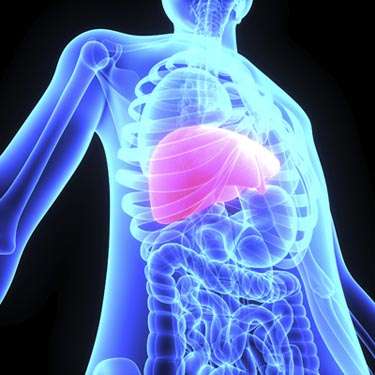Obesity & Metabolic Health
Fatty Liver Disease
Find your care
Our knowledgeable experts treat obesity and fatty liver disease while improving metabolic health. Call 310-825-2631 to connect with a specialist.

What is fatty liver disease?
- Fatty liver disease is also known as non-alcoholic fatty liver disease (NAFLD) and non-alcoholic steatohepatitis (NASH).
- Just as people get fat, so do livers. Simple fat in the liver is called steatosis. When there is fat and inflammation we add the term 'hepatitis' and get steatohepatitis. Therefore, fatty liver disease exists on a spectrum from simple fatty liver (NAFLD) to an inflamed fatty liver (NASH). Standard liver function tests (LFTs) cannot differentiate the two.
- NAFLD/NASH is the most common liver disorder in industrialized countries. In the United States, the prevalence of fatty liver disease ranges from 10-46%, and liver biopsy based studies report a prevalence of NASH of 1-17%. Systematic reviews suggest NAFLD prevalence in adults is probably 25-33%, while NASH prevalence is 2-5%. Thus, the natural history remains poorly understood and the influence of an individual's genetic composition remains to be determined.
- Generally speaking, patients with the more advanced lesions of NASH are at risk for developing scar tissue in the liver (fibrosis) which can progress to cirrhosis and end-stage liver disease.
- Cirrhosis of the liver portends a shortened life span and puts patients at risk for developing several life-threatening complications and significantly impaired quality of life.
- The only treatment for cirrhosis is a liver transplant. But the supply of suitable donor organs for liver transplantation is tiny compared to the number of patients in need. Obese patients with cirrhosis have a higher surgical risk for liver transplantation. Worse still, the obesity epidemic has only reduced the pool of potential donor livers – we don't want to give fatty livers to people who need a liver transplant.
- Although it was a rare indication for liver transplant 20 years ago, NSAH is now a common reason for people to get liver transplant. It is likely that NASH will soon be the number one reason for liver transplantation because of the obesity epidemic.
- Long standing NAFLD/NASH may impart a risk for developing liver cancer, even in the absence of cirrhosis. For this reason we are particularly vigilant about identifying and risk stratifying patients with fatty liver disease.
Fatty liver disease symptoms and presentation
- Most patients with NAFLD/NASH have no symptoms of fatty liver disease but some may complain of fatigue, malaise, and intermittent right upper abdominal discomfort or aching.
- Patients are typically diagnosed with NAFLD in their 40s or later, but given the size of the obesity epidemic, we know there are many younger patients who have still not been screened and likely have fatty liver disease.
- Patients usually come to medical attention when laboratory testing reveals elevated liver tests or when fat is detected incidentally on abdominal imaging (e.g. ultrasounds, CT scans, or MRIs).
- The typical fatty liver patient has liver tests that are often only mildly elevated at two to three times the upper limit of normal. Because this is such a common finding, it is easy for primary care providers to overlook this and do no further workup. All patients with persistently abnormal liver tests deserve a hepatologic consultation.
- The degree of liver test elevation does not accurately predict how much liver scarring (fibrosis) is present.
Management of fatty liver disease
- In a liver consultation at COMET, our patients receive a thorough history, physical examination, and appropriate laboratory imaging tests. We typically use state-of-the-art medical imaging (MRI, CT, or ultrasound), and are set to use advanced MRI protocols in the appropriate context to try and estimate how much liver scarring is present. In some cases your doctor might recommend a liver biopsy to determine the extent of damage in your liver or to find out if more than one type of injury pattern is present.
- While there are no good long-term medical therapies for NAFLD/NASH, you will work in close consultation with your COMET hepatologist to customize a multi-faceted approach to treating your fatty liver disease. The best long-term option for treating obesity and fatty liver remains bariatric (i.e. weight loss) surgery. The pros and cons of medical and surgical approaches are fully discussed with each patient a plan of action of determined on a customized basis for a particular patient's needs.